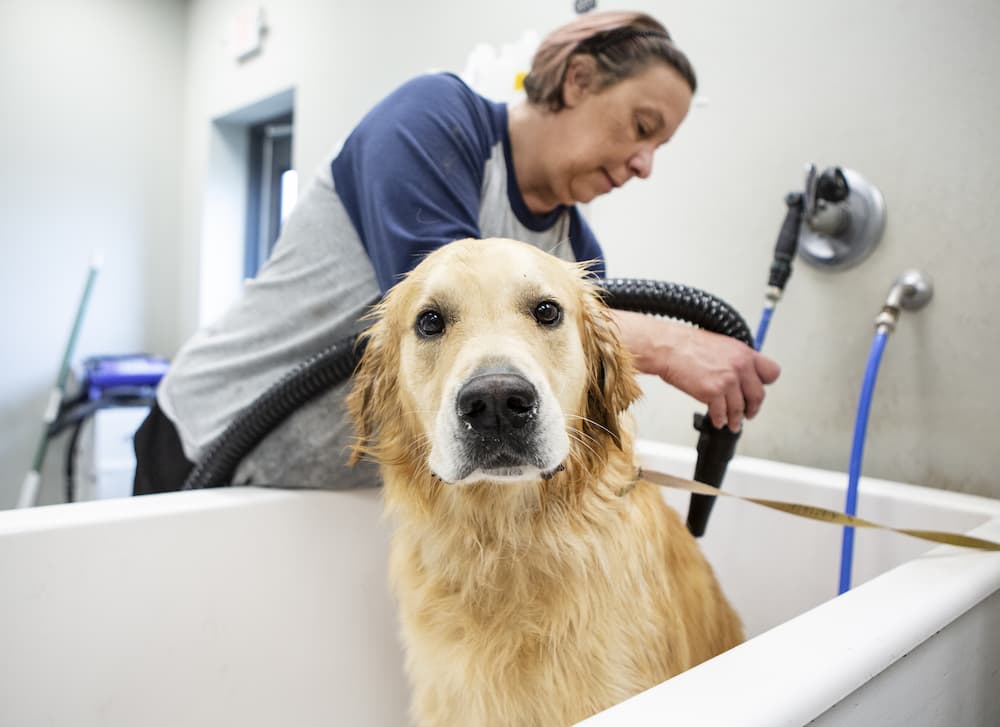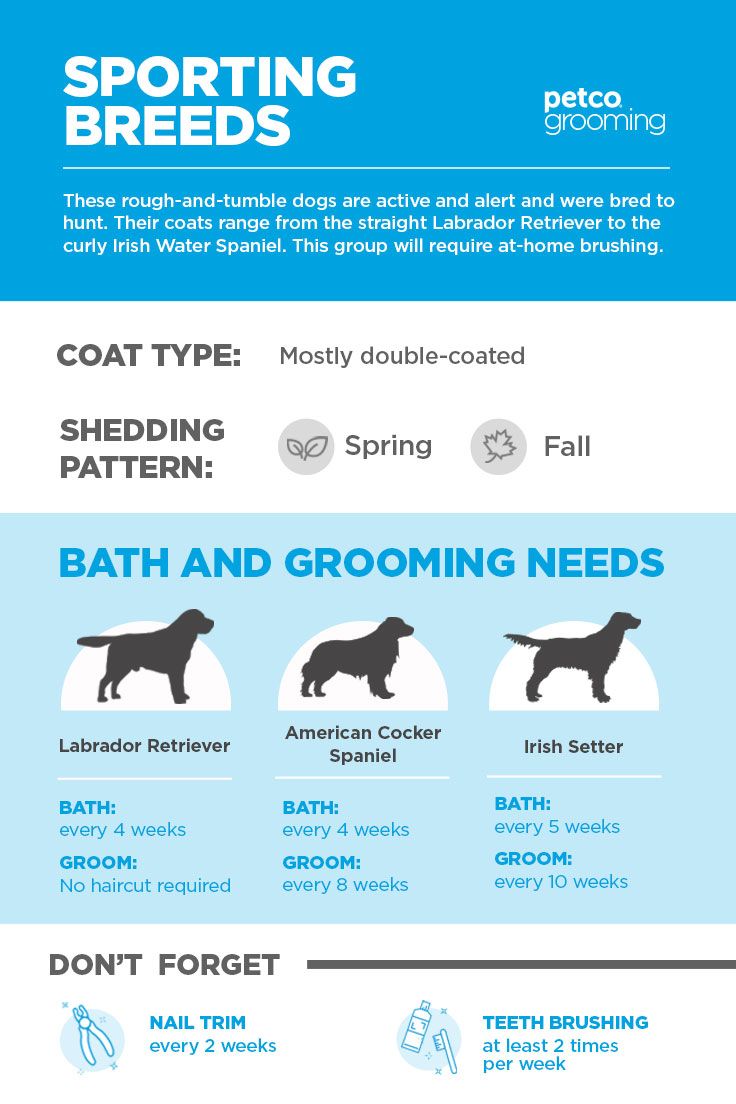As dog owners, one common question that often pops up is, “How often do I shower my dog?” Keeping your furry friend clean is an essential part of their grooming routine, but finding the right bathing frequency can feel like navigating a maze. In this paw-some blog post, we will delve into the factors that influence how often your dog should be showered, from their breed and coat type to their lifestyle and skin conditions. Understanding the optimal bathing schedule for your canine companion is crucial for maintaining their coat health and overall well-being. So, let’s unravel the secrets behind a proper grooming routine that will leave your dog feeling fresh, clean, and oh-so-huggable!
Introduction: Understanding the Importance of Regular Dog Grooming
Regular dog grooming is more than just keeping your furry friend looking clean and tidy; it plays a crucial role in their overall health and well-being. Grooming involves brushing their coat, trimming their nails, cleaning their ears, and more. Not only does grooming help prevent matting, skin infections, and parasites, but it also allows you to check for any abnormalities or health issues early on.
The Benefits of Regular Grooming
Grooming stimulates healthy oil production in the skin, keeping the coat shiny and healthy. It also improves blood circulation, which contributes to overall skin and coat health.
- Maintains a Clean Coat: Regular grooming helps remove dirt, debris, and dead hair from your dog’s coat, preventing matting and skin issues.
- Early Detection of Issues: By grooming your dog regularly, you can identify any lumps, bumps, or skin irritations that may require veterinary attention.
- Enhances Bonding: Grooming sessions provide an opportunity for bonding and strengthening the relationship between you and your dog.

Factors to Consider When Determining Shower Frequency for Your Dog
Showering your dog regularly is essential for maintaining their skin and coat health. However, the frequency of baths should be determined based on several factors to ensure your furry friend’s well-being.
1. Your Dog’s Breed and Coat Type
Different dog breeds have varying coat types that require different grooming routines. Short-haired breeds may need baths less frequently than long-haired breeds to prevent skin irritation.
2. Your Dog’s Lifestyle and Activities
If your dog is active and loves outdoor adventures, they may need more frequent baths to remove dirt and odors. Dogs that spend more time indoors may require fewer baths.
3. Skin Conditions and Allergies
Dogs with skin conditions or allergies may require special shampoos or medications recommended by a veterinarian. Adjust their bathing frequency based on their specific needs.

Guidelines for Different Dog Breeds and Coat Types
When it comes to grooming your furry friend, understanding their specific breed and coat type is crucial for a successful grooming routine. Different dog breeds have unique grooming requirements based on their coat types, whether it’s short, long, curly, or double-coated.
Grooming Short-Haired Dogs
Short-haired breeds like Beagles and Dalmatians require regular brushing to minimize shedding. Use a soft-bristle brush to keep their coat glossy and healthy. Bathing every 3-4 months is usually sufficient to maintain cleanliness.
Grooming Long-Haired Dogs
Long-haired breeds such as Shih Tzus and Maltese need daily brushing to prevent matting and tangles. Consider professional grooming every 4-6 weeks to keep their coat in top condition and avoid skin issues.

Tips for Maintaining Proper Hygiene Between Showers
Proper hygiene for your dog is essential, even between showers. Here are some tips to help keep your furry friend clean and fresh:
Regular Brushing
Regular brushing removes dirt, debris, and loose hair from your dog’s coat, preventing matting and odors.
Dental Care
Dental care is crucial for your dog’s overall hygiene. Consider brushing your dog’s teeth at least twice a week to prevent dental issues.
Potential Risks of Over-Showering Your Dog
While regular grooming is essential for your furry friend’s health, over-showering your dog can have negative consequences. Over-bathing can strip the skin and coat of natural oils, leading to dryness and irritation, especially for dogs with sensitive skin.
Impaired Skin Barrier
Excessive bathing can disrupt the skin’s natural pH balance, compromising the skin barrier and making your dog more susceptible to infections and environmental irritants.
Allergic Reactions
Some dogs may be allergic to certain shampoos or grooming products used during baths, leading to skin rashes and itchiness. It’s important to choose gentle and dog-specific products to avoid such reactions.
Common Mistakes to Avoid in Your Dog’s Grooming Routine
When it comes to grooming your furry friend, avoiding common mistakes is crucial for their well-being and comfort. Here are some pitfalls to steer clear of:
Skipping Regular Brushing Sessions
Regular brushing is essential for preventing mats and tangles in your dog’s coat. Make sure to brush your dog at least a few times a week to maintain a healthy and shiny coat.
Using Incorrect Grooming Products
Using the wrong grooming products can irritate your dog’s skin. Always opt for products specifically formulated for dogs to avoid any skin issues.
- Choose shampoos that are gentle and ph-balanced
- Use appropriate brushes for your dog’s coat type
Ignoring Dental Care
Many pet owners overlook regular dental care for their dogs, which can lead to dental issues and bad breath. Be sure to brush your dog’s teeth regularly using toothpaste made for dogs.
Frequently Asked Questions
- Why is it important to shower my dog?
- Showering your dog helps to keep their skin clean, removes dirt and debris, and prevents skin infections. It also helps to maintain their coat in good condition.
- How often should I shower my dog?
- The frequency of showering your dog depends on their breed, coat type, and activities. Typically, most dogs benefit from a bath once every 4-6 weeks, but some may require more frequent baths.
- Can I use human shampoo to shower my dog?
- No, it is not recommended to use human shampoo on dogs as it can be too harsh for their skin and coat. It is best to use a dog-specific shampoo that is formulated for their pH levels.
- What are the signs that my dog needs a shower?
- Some signs that your dog may need a shower include a strong odor, visibly dirty fur, itching or scratching, and greasy, oily fur. However, it is important not to over-bathe your dog as it can strip their skin of natural oils.
- How can I make shower time enjoyable for my dog?
- To make shower time enjoyable for your dog, ensure the water is at a comfortable temperature, use positive reinforcement, offer treats, and make it a bonding experience. Gradually introduce them to the shower and use gentle movements.
Final Thoughts: A Clean and Happy Pup!
In conclusion, the question of “how often do I shower my dog” boils down to factors like breed, activity level, and coat type. While there isn’t a one-size-fits-all answer, a general rule of thumb is to bathe your dog every 4-6 weeks and adjust as needed. Regular grooming sessions, including brushing and trimming, are key to maintaining your furry friend’s hygiene and health. Pay attention to signs like odor, dirt, or itching to determine when a bath is necessary. Always use dog-friendly products and techniques to make the experience enjoyable for both you and your pet. Remember, a clean pup is a happy pup!



